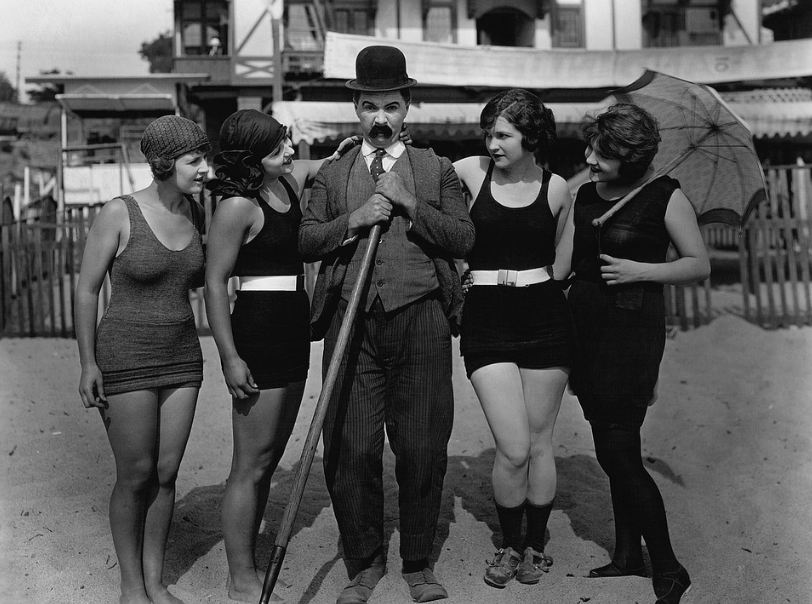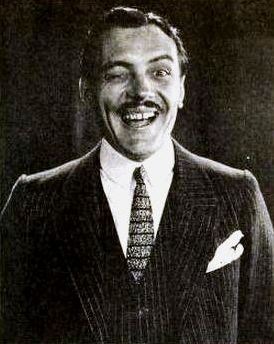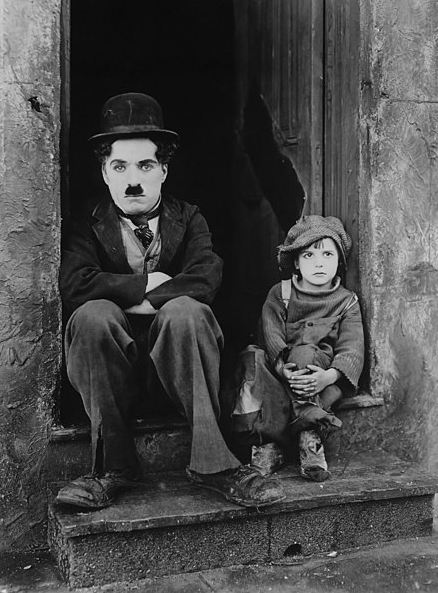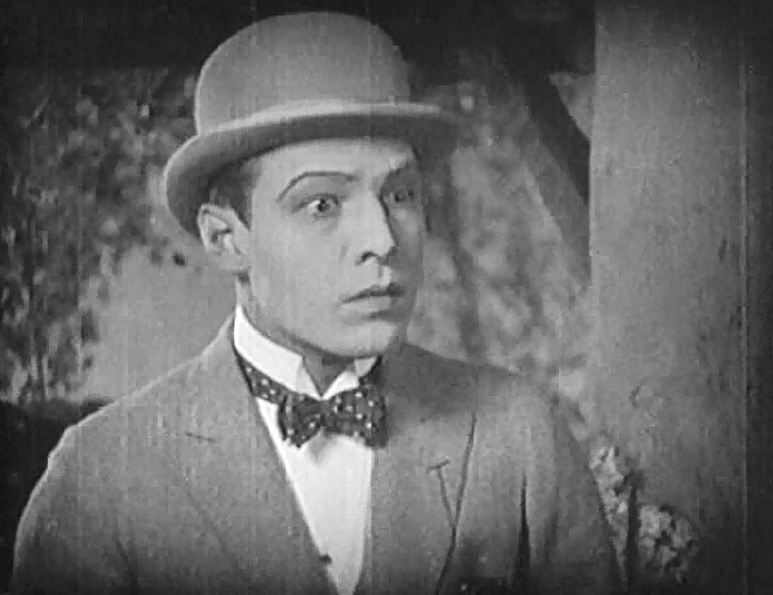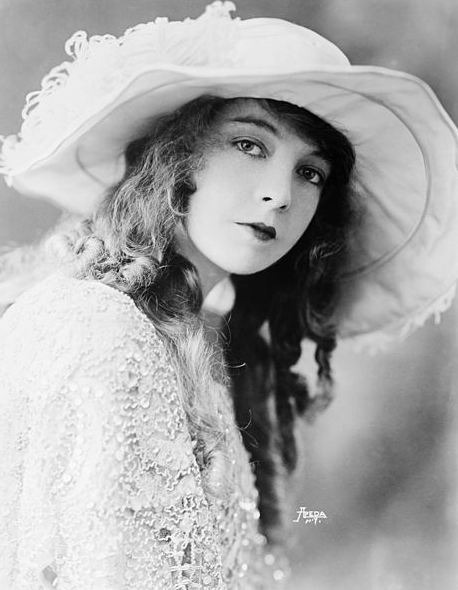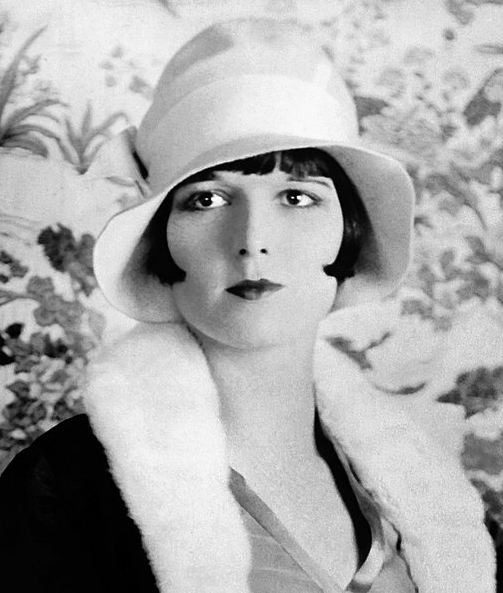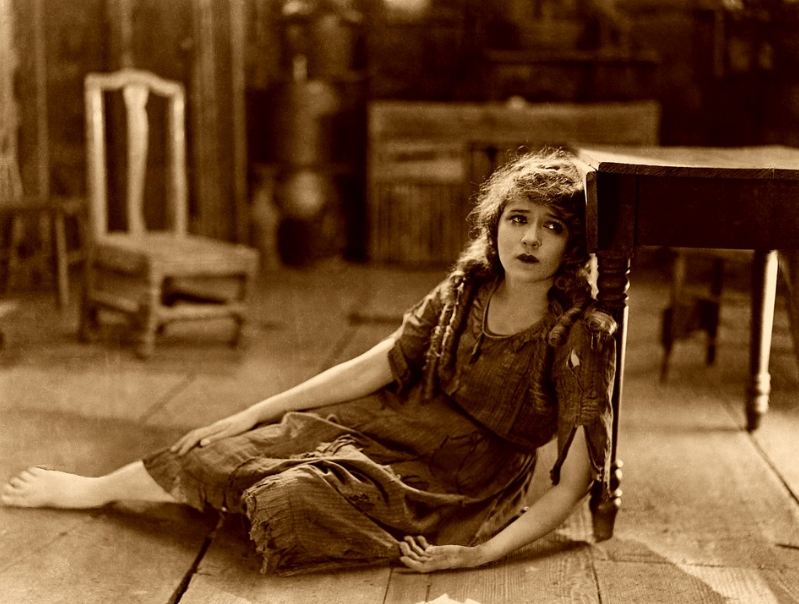The mid-1890s to the late 1920s were known as the silent movie era. A silent movie is a film that has no synchronized recorded sound and no audible dialogue. Even though they convey narrative and emotion visually, different plot elements like era, setting, or key lines of dialogue may, when needed, be conveyed with the use of title cards.
The term “silent movie” or “silent film” is something of a contradiction because the movies were almost always accompanied by live sounds. During the silent era, a theater organist, pianist, or even a small orchestra would usually play music to accompany the films. Organists and pianists would play either from improvisation or from a music sheet. There were also times when a person would narrate the intertitle cards for the audience.
During those times, the technology to coordinate sound with the film did not exist. However, music was seen as an important part of the viewing experience. The term silent film is also often used to describe sound-era films that have a recorded music-only soundtrack without any dialogue. Some examples of these are The Artist and City Lights.
If you are interested to learn more about silent films, you’re in the right place. Read on as we’re giving you the ultimate guide to silent movies.
The Foundations and Early Stages of Silent Movies
Film projection typically progressed from magic lantern shows, which used a glass lens and an obstinate light source, like a powerful lantern, to project images onto a wall from glass slides. These slides were initially hand-painted. However, after the arrival of photography in the 19th century, still photographs were used. By about fifty years, the invention of practical photography apparatus preceded cinema.
Joseph Plateau introduced the principle of stroboscopic animation with his Fantascope, or also known as the phenakistiscope, in 1833. After six years, the first successful photographic system was introduced by Louis Daguerre. In 1849, Joseph Plateau suggested an early method of animating stereoscopic photographs using the stop motion technique. In 1852, a simplified device was produced by Jules Duboscq, but it was not successful. It was in the late 1850s when the early success in instantaneous photography came, and it inspired new hope to developing animated stereophotography systems. However, in the following two decades, the few attempts once again utilized stop-motion techniques.
In 1878, a row of a dozen cameras was used by Eadward Muybridge to record a running horse. Its results surprised the world, and it was published as The Horse in Motion. After that, many others began to work with chronophotographs, and they tried to animate and project the results.
Since 1887, Ottomar Anschutz had much success using the Electrotachyscope, as it had very clear animated photographic images displayed on a small milk-glass screen or inside coin-slot viewers. And in 1894, he began projecting the images on a large screen. His works only lasted a few seconds, but these inspired the Edison Company to compete with films that could last approximately 20 seconds using their Kinetoscope peep-box movie viewers from 1893 onward.
The Silent Movie Era
The foundation for the future development of motion picture cameras, projectors, and transparent celluloid film was laid by the work of Muybridge, Marey, and Le Prince. This led to the growth of cinema as we know it at the present time.
During the silent era, the art of motion pictures grew into full maturity, which was from 1894 in film to 1929 in film. The height of the silent era, which was from the early 1910s in film to the late 1920s, was a predominantly fruitful period and was filled with artistic innovation. In this period, film movements of Classical Hollywood and French Impressionism, German Expressionism, and Soviet Montage started.
Silent filmmakers established the art form to the degree that almost every style and genre of filmmaking during the 20th and 21st centuries has its creative origins in the silent movie era. In addition to that, the silent era was also a ground-breaking one from a technical viewpoint. The close-up, long shot, panning, three-point lighting, and continuity editing all became predominant long before silent movies were replaced by talking pictures or “talkies” in the late 1920s.
The visual quality of silent movies, especially those that were made in the 1920s, was usually high. However, there remains a widely held misconception that these movies were primitive or hardly watchable by modern standards. This misapprehension comes from the unfamiliarity of the general public with the medium and also from the carelessness on the part of the industry.
It’s because most silent movies are poorly preserved, which led to their deterioration. The well-preserved ones, on the other hand, were usually played back at the wrong speed or suffer from censorship cuts and missing frames or scenes, which gives the appearance of poor editing. Many silent movies only exist in second- or third-generation copies, which are usually made from already damaged or neglected film stock.
Aside from that, another widely held fallacy is that silent films lacked color. But did you know that color was far more prevalent in silent movies compared to the first few decades of sound films? By the early 1920s, eighty percent of films could be seen in some sort of color, mostly in the form of film tinting, toning, or even hand coloring, and as well as with fairly natural two-color processes like Technicolor and Kinemacolor.
With the implementation of sound-on-film technology, traditional film colorization processes stopped. Traditional film colorization, which involved the use of dyes, interfered with the high resolution needed for the built-in recorded sound and was therefore abandoned. The pioneering three-strip technicolor process that was introduced in the mid-30s was costly and fraught with limitations. Also, the color would not have the same occurrence in the film as it did in silent movies for about four decades.
The Best Movies in the Silent Film Era
For modern viewers, watching a silent movie can be something of a chore. It’s because aside from having no audible dialogue, silent films also had a different set of conventions. It means that they need to be grasped before a movie from this era can be fully enjoyed. But it may be worth a try.
The silent movie era is an essential part of film history. It was the time when the film was developing as a form of art and entertainment. In addition to that, it can also be a pleasant surprise to recognize how much can be expressed without sound, and as well as to notice the qualities that may have been lost when the soundtrack was introduced.
To give you some ideas of what films were like back then, here’s a list of the best movies in the silent movie era.
City Lights
This silent film was debatably the biggest risk of Charlie Chaplin’s career. It was released at the end of 1927. During that time, Chaplin had seen sound take cinema by storm. However, he resisted change-up and chose to continue in the silent tradition.
The movie was about a mismatched love story in the vein of DW Griffith’s Broken Blossoms, made some 10 years earlier. However, Charlie Chaplin modernizes it, moving the location from the dingy docks of Limehouse to the bustle of the city center. The entire film hinges in some way on the Little Tramp being outside time. It is a film that is about personal relationships. If you’d like to learn more about the movies by Charlie Chaplin, you can read our article about The Complete Works of Charlie Chaplin.
Metropolis
The early days of cinema were popular for the ways in which film producers truly did want to see how far they could drive the medium. The silent movie Metropolis is a film that is astonishing in many regards. One is that it is indeed gorgeous to look at, as it featured some of the most complex set designs of the silent era. In addition to that, it is also a film that engages with the pressing issues of its time, specifically the yawning gulf between the different social classes. Metropolis is proof of what science fiction films can conquer.
The Passion of Joan of Arc
This was a 1928 silent movie and is regarded by some as one of the most important films ever made. Based on its title, it focuses on the popular Joan of Arc, who is the young woman who was important in helping France attain military victory over the invading English army. The film features some accurately extraordinary performances. In addition to that, it also uses the close-up in ways that are almost unnervingly intimate.
The Cabinet of Dr. Caligari
Even those who have not seen this silent film are no doubt aware of the film movement to which it belonged, which is German Expressionism. The Cabinet of Dr. Caligari is indeed a haunting film. It has a very interesting narrative and striking visuals. The film suspends the audience in a world of nightmare images. This is why almost anyone who saw the film found it challenging to easily forget about it.
Man with a Movie Camera
This is one of the silent films that may take a bit fair of patience to watch. Aside from being silent, it is also highly experimental. Since there is no narrative to speak of, the audience is required to pay attention to what the images are doing. The director of the film, Dziga Vertov, wanted to capture the chaos of modernity through film, which was the most modern of media at that time.
The Most Popular Silent Movie Stars
If you also want to know who were the most famous actors and actresses during the silent film era, here’s a list of the most popular silent movie stars:
Greta Garbo (1905-1990)
The Artist by Michel Hazanavicius was among the most discussed films. It was an imitation of a monochrome Hollywood movie of the 1920s, which had created a welcome new interest in silent cinema. This film starred Greta Garbo, a Swedish-American actress who was popular for her melancholic and somber persona. She often stared as a tragic character in films. She was among the greatest female stars of classic Hollywood cinema. She was also referred to as “The Devine” due to her whimsical attitude and her preparedness to avoid the press. You can learn more about her by reading our Introduction to Greta Garbo: A Silent Screen Star.
Max Linder (1883-1925)
Max Linder was a French comedian who turned to the cinema in 1905, where he created the first popular comic character “Max,” a noble, skirt-chasing boulevardier. Max was much admired by Chaplin, who gave him a photograph that was signed: “To Max, the professor, from his disciple Charles Chaplin.”
Max was seriously wounded in the great war, and he also suffered from depression. However, in the early 20s, with the help of Chaplin, he created two classics in Hollywood, which were Seven Years Bad Luck and the Dumas parody, The Three Must-Get-Theres. It was believed that he committed suicide in Paris at the age of 41. If you’d like to learn more about Max Linder and his works, you can read our Introduction to Max Linder: A Silent Screen Star.
Charlie Chaplin (1889-1977)
Charlie Chaplin started as a music hall star before he became an inventive director-star in Hollywood in 1914. His tramp persona made him the most popular man who ever lived, and of course, one of the richest, as well. He was the only filmmaker able to ignore the coming of sound after a decade of creating shorts and producing films in his studio, such as The Gold Rush, The Kid, and City Lights. He was referred to as a genius and belongs to the greatest artists of all time. If you want to learn more about him, you can read our Ultimate Guide to Charlie Chaplin.
Harold Lloyd (1893-1971)
Harold Lloyd was a son of a Californian pool hall manager, and he entered the world of film during his teenage years at the fun factories run by Hal Roach and Mack Sennett. In 1917, a screen persona was invented that lasted him for life. It was a sympathetic, slightly naive middle-class enterprising person wearing a suit, tie, boater, and horn-rimmed glasses. Harold Lloyd owned what he produced, which made him rich.
Lloyd’s best and most famous film was the splendid Safety Last in 1923, where he played an accident-prone small-town boy in New York. The climax of the film sees him ascending a skyscraper Kong-style, which was among the funniest and scariest sequences ever made. If you want to learn more about his works, you can check out our article, Harold Lloyd: A Silent Screen Daredevil Comedian.
Rudolph Valentino (1895-1926)
Rudolph Valentino was the son of a military vet. He traveled from Italy to Hollywood and worked as a dancer and gigolo. He found overnight stardom when he played the Argentinian hero of the first world war epic The Four Horsemen of the Apocalypse in 1921. He became an exotic heart-throb with shiny eyes and spreading nostrils in the film The Sheik, Blood, and Sand, and as well as in Monsieur Beaucaire.
However, his sudden death at the age of 31 had created a wave of emotion that remains unparalleled. For more information about this silent film actor, you can read our article, Rudolph Valentino: A Silent Star Gone Too Soon.
Lillian Gish (1896-1993)
Lillian Gish’s career was bound up with DW Griffith, under whose direction she worked from 1912 to 1921 in films like Intolerance, Way Down East, The Birth of a Nation, and other classics. She became the greatest film actress debatably during those times. Lillian Gish brought an eerie openness to her work, which was a combination of resilience and vulnerability.
This was seen at its finest in masterworks directed by Swedish filmmaker Victor Sjostrom, such as The Scarlet Letter in 1926 and The Wind in 1928, which was an awe-inspiring psychological drama about an easter woman who married a tough farmer in the forsaken west. If you’d like to know more about this silent film actress, read our Introduction to Lillian Gish: A Silent Screen Star.
William S. Hart (1864-1946)
William S. Hart spent some years in Broadway before he entered film at the age of 49. He carried thoughtful, personal knowledge of the old frontier to the western, which gave the genre an uncommon realism and moral power. Hart personified “the good-bad ma,” which was a figure in search of redemption. He reached his peak with films Hell’s Hinges in 1916 and The Toll Gate in 1920. William S. Hart was the pre-eminent silent westerner, a harbinger of Cooper, Fonda, and Scott. You can find out more about him by reading our post, William S. Hart: The Silent Cowboy.
Buster Keaton (1895-1966)
Buster Keaton started to appear on stage at the age of three. He was the youngest, most cinematically creative, and charming of Hollywood’s three greatest silent comics. The other two were Chaplin and Lloyd. However, Buster was the only one to experience post-stardom anonymity, though, fortunately, his films were discovered, and his reputation was restored in the 1960s. Some of his finest films include The Play House in 1921, Sherlock Jr. in 1924, and The General in 1926, which was a railroad epic. To know more about his life, you can read our article, A Brief Biography of Buster Keaton: A Silent Star.
Louise Brooks (1906-1985)
Louise Brooks was a small-town Kansas girl who came to Hollywood via Broadway chorus lines. She was cast in flapper comedies before she appeared in the film Beggars of Life by William Wellman in 1928, where she played a fugitive disguised as a boy and living together with hobos. But her name rests on two silent German classic films, Pandora’s Box and Diary of a Lost Girl, both in 1929 by GW Pabst.
She was also a much-imitated fashion icon with her dark bobbed hair, expressive face, perfect complexion, and graceful movement. Back in America, Louise Brooks became a loner and wrote a marvelous memoir. If you want to learn more about her, read our article, Louise Brooks: A Movie Star and Dancer.
Mary Pickford (1892-1979)
Mary Pickford started her career in film with DW Griffith’s Biograph Company. Her first-ever film was in 1909, which was The Violin Maker of Cremona. New Yorkers quickly noticed her due to her acting and attractive face. She appeared in around 51 films in a year and toured in 1910 with the Griffith Company. In 1916, she also started her career as a producer and had control over the movies she acted in. You can learn more about her by reading our article, Mary Pickford: A Silent Movie Star.
Conclusion
The silent film era had indeed played a great role in shaping the movie industry that we have today. It is quite amazing to learn how silent movies were able to deliver wonderful stories and acts without the need for dialogues from the actors and actresses. We hope that this helped you in learning more about silent movies.

